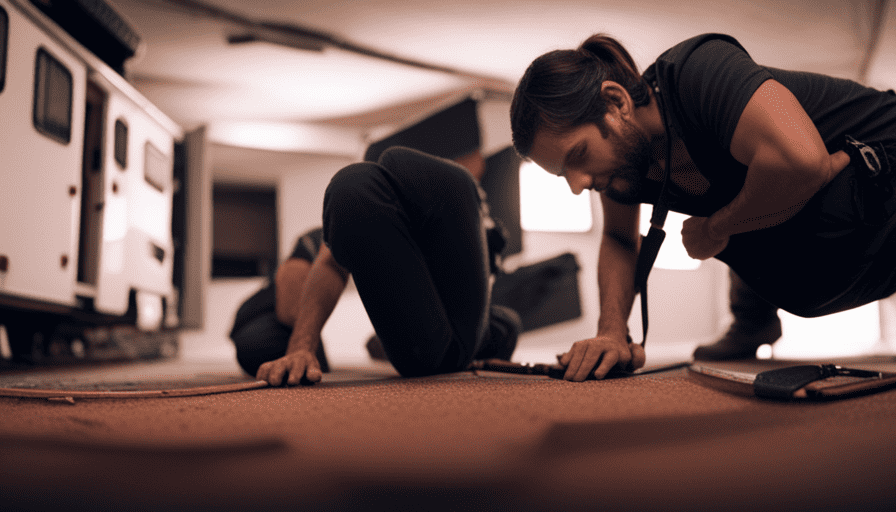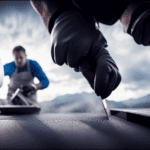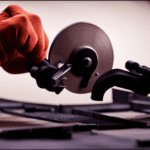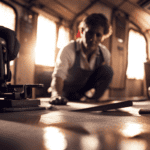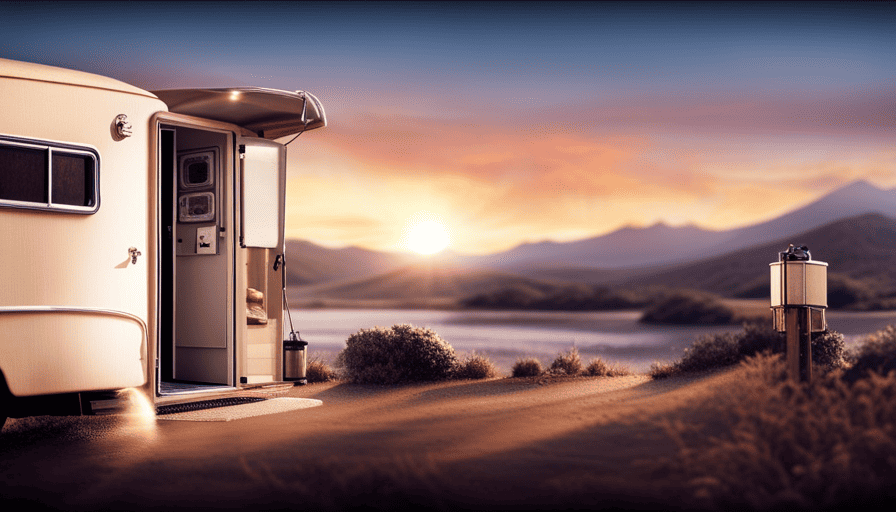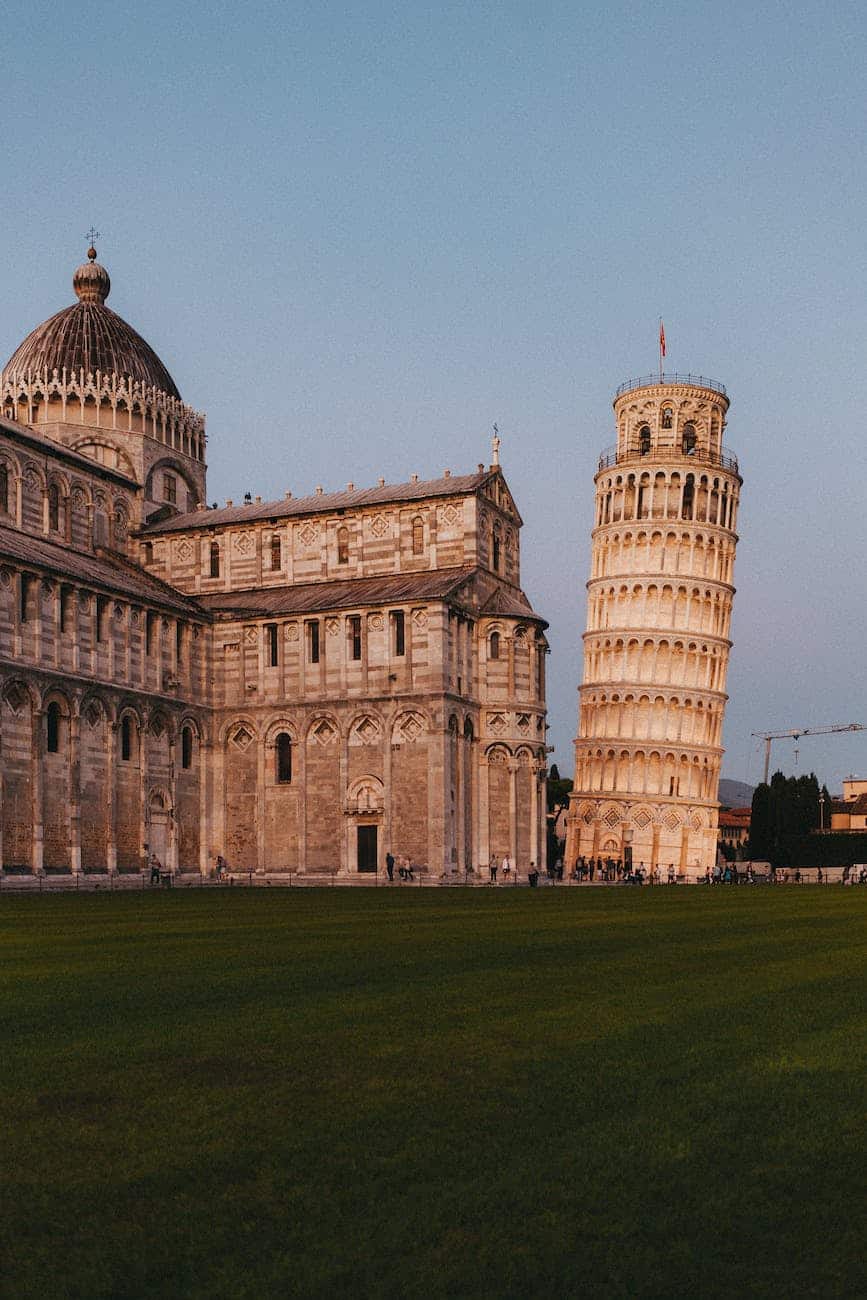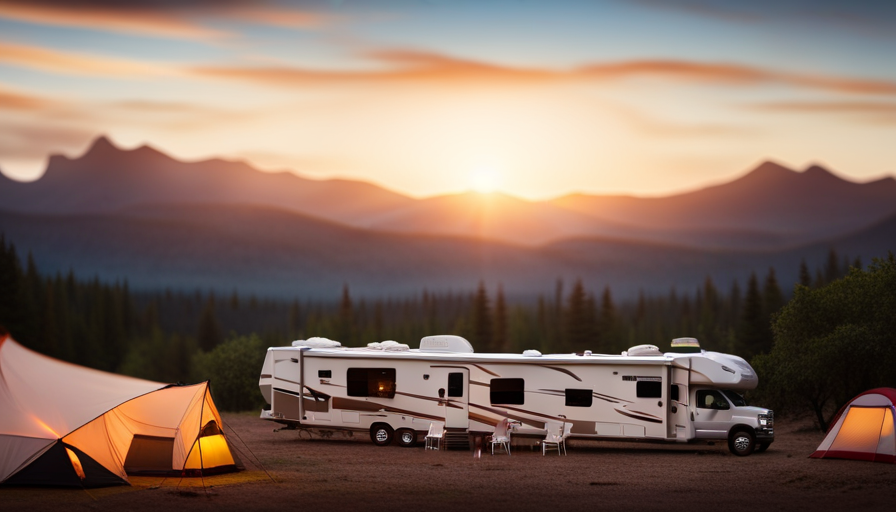Ever found yourself treading on uncertain ground, wary of what might be underneath? That perfectly captures my emotions upon finding a soft spot on my camper’s floor. I was hit by a wave of unease, in both a literal and metaphorical sense. However, there’s no need to worry, fellow explorers, as I stand ready to lead you through repairing that troubling soft area in your cherished camper.
In this article, I will share my knowledge and experience on how to identify the signs of a soft floor, assess the extent of the damage, and gather the necessary tools and materials for the job.
We will then dive into the step-by-step process of:
- Removing the damaged flooring
- Repairing or replacing the subfloor
- Installing new flooring to restore stability and comfort.
But our journey doesn’t end there! I will also provide tips on how to seal and finish the floor, test and inspect the repairs, and maintain your camper to prevent future damage.
So, grab your tool belt and join me on this adventure as we breathe new life into your camper’s floor. Let’s get started!
Key Takeaways
- Signs of a soft floor in a camper should be identified and assessed to determine the extent of damage.
- Gathering the necessary tools and materials for repair is crucial before starting the process.
- Damaged flooring should be removed carefully to access and repair or replace the subfloor.
- Treating and preventing mold or rot is important, along with choosing water-resistant and easy-to-clean flooring materials for the camper.
Identify the Signs of a Soft Floor
One of the first signs that you may have a soft floor issue in your camper is if you notice a slight sinking feeling when you walk on certain areas. This could be a result of common causes such as water damage, rotting wood, or worn-out supports.
Water damage is often the main culprit, caused by leaks in the roof, windows, or plumbing system. Rotting wood can occur if the camper has been exposed to excessive moisture for a prolonged period. Worn-out supports can also contribute to a soft floor, as they’re responsible for providing stability and strength to the structure.
To prevent a soft floor issue in your camper, it’s important to regularly inspect and maintain the various components. Check for any signs of leaks and repair them promptly. Ensure proper ventilation to prevent moisture buildup. Regularly inspect the supports and replace any damaged or weakened ones. Additionally, avoid overloading the camper with excessive weight, as this can strain the floor and lead to structural issues.
Once you have identified the signs of a soft floor, the next step is to assess the extent of the damage.
Assess the Extent of the Damage
To accurately gauge the severity of the issue, it is essential to thoroughly examine the overall condition of the flooring in the recreational vehicle. One of the most common causes of a soft floor in a camper is water damage. Therefore, it is crucial to identify signs of water damage, such as discoloration, warping, or a musty odor.
To help you understand the extent of the damage, I have created a table that showcases the different signs of water damage and their corresponding severity levels:
| Sign of Water Damage | Severity Level |
|---|---|
| Discoloration | Mild |
| Warping | Moderate |
| Musty Odor | Severe |
By assessing the severity level, you can determine the appropriate course of action to fix the soft floor. If the damage is mild, you may be able to prevent soft floors in campers by addressing the underlying issue, such as a leaky pipe or damaged seal. However, if the damage is severe, it may require replacing the entire flooring.
Next, we will discuss how to gather the necessary tools and materials to fix the soft floor in your camper.
Gather the Necessary Tools and Materials
Now, you’ll want to gather all the essential tools and materials you’ll need to tackle this repair job in your RV. Preparation is key when it comes to fixing a soft floor in a camper, and having the right tools and materials on hand will make the process much smoother.
Here are the steps you should follow to gather everything you need.
First, you’ll need to gather some basic tools such as a screwdriver, hammer, utility knife, and pry bar. These tools will come in handy for removing any screws, nails, or other fasteners that are holding the damaged flooring in place. Additionally, you’ll need a tape measure and a level to ensure that your new flooring is installed correctly.
In terms of materials, you’ll need to purchase new flooring that matches the existing flooring in your camper. This could be vinyl, laminate, or carpet, depending on your preference. You’ll also need plywood or particle board to reinforce the damaged area and provide a solid foundation for the new flooring.
With all your tools and materials gathered, you’re now ready to move on to the next step: removing the damaged flooring. By following these steps, you’ll be well-prepared to tackle this repair job and restore your camper’s floor to its former glory.
Remove the Damaged Flooring
Let’s start by getting rid of that worn-out flooring in your RV. Removing damaged flooring is the first step towards fixing a soft floor in your camper. To do this, you’ll need a few tools and materials:
- Pry bar: This’ll help you lift and remove the damaged flooring.nn2. Utility knife: Use this to cut through any adhesive or carpeting that may be holding the flooring in place.nn3. Safety goggles: It’s important to protect your eyes from any debris or dust that may be created during the removal process.nn4. Dust mask: This’ll help protect your lungs from any particles that may become airborne.
Once you have gathered these items, you can begin removing the damaged flooring. Start by using the pry bar to lift up the edges of the flooring and then work your way towards the center, removing the entire piece. Be careful not to damage the subfloor in the process.
After removing the damaged flooring, you can prepare the subfloor for repair or replacement. This may involve cleaning, sanding, or applying a leveling compound to ensure a smooth and sturdy surface for the new flooring.
Repair or Replace the Subfloor
Once you’ve removed the damaged flooring, it’s time to assess and address any issues with the subfloor in your RV. Repairing or replacing the subfloor is crucial to ensure a solid foundation for your camper.
There are several repair techniques you can consider depending on the extent of the damage and your budget. If the damage is minimal, you can try reinforcing the subfloor by adding additional support beams or plywood sheets. This can help strengthen the weakened areas and prevent further sagging or softness. However, if the damage is extensive or there are signs of rot or mold, it’s recommended to replace the entire subfloor.
When deciding whether to repair or replace, cost considerations are important. Repairing the subfloor can be a more affordable option, especially if the damage is localized. However, if the damage is widespread or the subfloor shows signs of structural instability, it’s best to invest in a complete replacement to ensure the long-term durability and safety of your camper.
Once the subfloor is repaired or replaced, it’s essential to treat and prevent mold or rot. This will be discussed in the subsequent section, as it’s crucial for maintaining a healthy and sturdy camper.
Treat and Prevent Mold or Rot
After addressing any issues with the subfloor, it’s crucial to tackle the insidious presence of mold or rot that can silently undermine the structural integrity of your RV. Preventing water damage is essential to keep your camper’s floor in top condition. One way to do this is by choosing the right flooring material. Opt for materials that are water-resistant and easy to clean, such as vinyl or laminate flooring. These options can withstand moisture and are less prone to mold or rot. Additionally, make sure to seal all seams and edges properly to prevent water from seeping into the subfloor. Regularly inspect your camper for any signs of water damage, such as discoloration or musty odors. If you notice any issues, address them immediately to avoid further damage. By taking these preventive measures, you can prolong the lifespan of your camper’s floor and maintain a safe and comfortable living space. Now, it’s time to move on to the next step and install new flooring.
Install New Flooring
Choose a flooring material that suits your style and budget, and get ready to transform your RV into a cozy and inviting space. When it comes to installing laminate flooring in your camper, there are a few things to consider.
-
Durability: Look for a laminate that’s specifically designed for high-traffic areas. This’ll ensure it can withstand the constant movement and weight inside your camper. Additionally, opt for a laminate with a thick wear layer to prevent scratches and dents.
-
Water resistance: Since campers are prone to moisture, it’s crucial to choose a laminate that’s water-resistant. Look for options that have a waterproof core or a moisture-resistant backing. This’ll help prevent any damage caused by spills or leaks.
-
Easy installation: Installing laminate flooring in your camper should be a straightforward process. Look for options that have a click-lock system, which allows for easy installation without the need for adhesives or nails.
By choosing the right flooring material, you can ensure that your camper’s floor is not only sturdy but also aesthetically pleasing.
Once the laminate flooring’s installed, it’s time to seal and finish the floor to add an extra layer of protection.
Seal and Finish the Floor
To truly elevate your RV’s interior, you’ll want to make sure you seal and finish the floor, ensuring long-lasting protection and a stunning final touch.
When it comes to sealing your camper’s floor, there are various sealant options available. One popular choice is a polyurethane sealant, which provides a durable and waterproof barrier. Another option is a silicone sealant, known for its excellent adhesive properties. Whichever sealant you choose, make sure to apply it evenly across the entire floor, paying extra attention to the edges and corners.
Once the sealant has dried, it’s time to finish the floor. There are different floor finishing techniques you can use, depending on your desired outcome. If you prefer a natural and rustic look, you can opt for a clear polyurethane finish. This will protect the floor from stains and scratches while allowing the natural beauty of the wood to shine through. For a more modern and sleek appearance, you can choose a colored epoxy finish. This will not only provide a durable coating but also add a touch of style to your camper’s interior.
As you transition into the next section about testing and inspecting the repaired floor, it is important to ensure that the sealant and finish are fully cured before proceeding. This will guarantee that your floor is ready for the next step.
Test and Inspect the Repaired Floor
After sealing and finishing the floor of your camper, it’s crucial to test and inspect the repairs to ensure their effectiveness. This step is essential to guarantee the stability and durability of your newly repaired floor.
To properly inspect the repairs, follow these three steps:
-
Walk on the repaired floor: Take a walk around the repaired areas, paying close attention to any signs of weakness or softness. Apply pressure to different spots and check if the floor feels solid and stable.
-
Check for any movement: Stand still on the repaired floor and try shifting your weight from side to side. If there’s any noticeable movement or shifting, it might indicate that the repairs weren’t done correctly or that additional reinforcement is needed.
-
Inspect for visual signs: Carefully examine the repaired areas for any visible signs of damage or wear. Look for cracks, gaps, or unevenness in the flooring. Additionally, inspect the surrounding areas for any signs of water damage or leaks that could’ve caused the initial softness.
By thoroughly inspecting the repairs and checking for stability, you can ensure that your camper’s floor is in good condition and ready for use.
Moving forward, let’s explore how to maintain and prevent future damage to your camper’s floor.
Maintain and Prevent Future Damage
Now that you’ve successfully revived your mobile getaway oasis, it’s time to keep it in prime condition and shield it from future mishaps. One of the key aspects to maintain and prevent future damage is to focus on preventing moisture and reinforcing weak areas.
Moisture can be a camper’s worst enemy, leading to rot and soft spots in the flooring. To prevent moisture from seeping in, it’s important to regularly inspect and reseal any cracks or gaps in the exterior of your camper. Additionally, make sure to check for any leaks in the plumbing system and promptly fix them. Investing in a dehumidifier can also help in keeping the interior dry and preventing moisture buildup.
Reinforcing weak areas in the camper’s flooring is crucial to prevent any future soft spots. One effective way to reinforce weak areas is by installing additional support beams or braces underneath the floor. These reinforcements can help distribute the weight evenly and reduce the chances of the floor becoming soft again. Regularly inspecting the floor for any signs of weakness and addressing them promptly can also prevent further damage.
Remember, prevention is key when it comes to maintaining your camper’s flooring. By taking proactive measures to prevent moisture and reinforce weak areas, you can ensure that your mobile getaway remains in top-notch condition for many adventures to come.
| Prevention Tips | Reinforcement Techniques | Maintenance |
|---|---|---|
| Check for cracks or gaps in the exterior and reseal them | Install additional support beams or braces underneath the floor | Regularly inspect the floor for signs of weakness |
| Fix any plumbing leaks promptly | Use strong adhesives to secure loose or weak areas | Keep the interior dry and use a dehumidifier if needed |
| Avoid parking on wet or damp surfaces | Reinforce the subfloor with plywood or aluminum sheets | Clean the floor regularly and remove any debris |
| Use moisture-resistant materials for flooring replacement | Apply a protective coating to the floor surface | Avoid excessive weight or impact on the floor |
| Store the camper in a dry and well-ventilated area when not in use | Seek professional help for extensive repairs | Consider adding insulation to prevent temperature and humidity fluctuations |
Frequently Asked Questions
What are the common causes of a soft floor in a camper?
Common causes of a soft floor in a camper are typically due to rotten wood and water damage. Over time, water can seep into the camper’s flooring, causing the wood to deteriorate and become soft. This can occur from leaks in the roof, windows, or plumbing systems. Additionally, prolonged exposure to moisture can also lead to the growth of mold and mildew, further contributing to the softening of the floor.
How long does it typically take to fix a soft floor in a camper?
On average, repairing a soft floor in a camper can take anywhere from a few days to a couple of weeks, depending on the extent of the damage and the complexity of the repair. It’s crucial to address the issue promptly to prevent further damage and ensure a safe living space.
Taking the time to properly assess and repair the soft floor will not only restore the structural integrity of your camper but also provide peace of mind for your future adventures.
Can I fix a soft floor in a camper myself, or do I need to hire a professional?
I would recommend hiring a professional for camper floor repair rather than attempting a DIY camper floor repair. While it may be tempting to save money and tackle the project yourself, hiring a professional offers several benefits. They have the necessary expertise and experience to properly assess the extent of the damage and provide a long-lasting solution. Additionally, professionals have access to specialized tools and materials, ensuring a higher quality repair job.
Are there any temporary solutions for a soft floor in a camper?
There are a few temporary solutions for a soft floor in a camper that you can try yourself with DIY repairs.
One option is to reinforce the weak areas with additional support, such as plywood or bracing.
Another option is to use leveling jacks or blocks to raise the sagging floor temporarily.
Keep in mind that these solutions aren’t permanent fixes and should be used as a temporary measure until you can properly address the underlying issue.
What are the potential risks of ignoring a soft floor issue in a camper?
Ignoring a soft floor issue in a camper can lead to potential dangers and structural damage. The weakened floor may not be able to support the weight of the occupants or furniture, causing it to collapse or develop further damage.
Additionally, a soft floor can indicate underlying issues such as water damage or rot, which can spread and affect other areas of the camper.
It’s crucial to address these problems promptly to ensure the safety and longevity of the camper.
Are the methods to fix a floor in a camper the same as fixing a soft floor?
When it comes to fixing a camper floor, the methods may not be exactly the same as those used for fixing a soft floor. While both involve repairing the floor, the materials and techniques may vary depending on the specific issue. It is recommended to consult a professional for proper guidance and expertise in fixing camper floor problems.
Conclusion
Well, folks, there you have it – the ultimate guide to fixing a soft floor in your beloved camper. I hope you were taking notes because this is some serious business.
Now, remember, maintaining your camper’s floor is crucial if you want to avoid any unpleasant surprises during your adventures. So, grab your tools, roll up your sleeves, and get ready to show that soft floor who’s boss.
Happy repairing, and may your future camping trips be smooth and solid underfoot!

